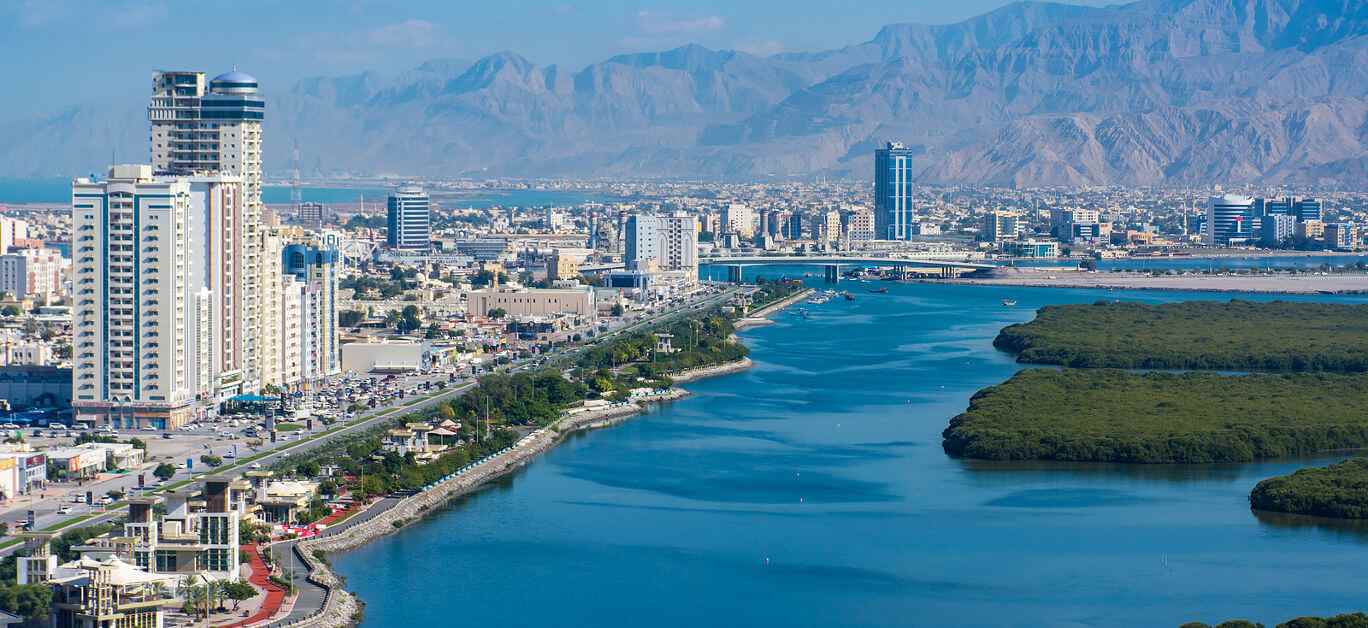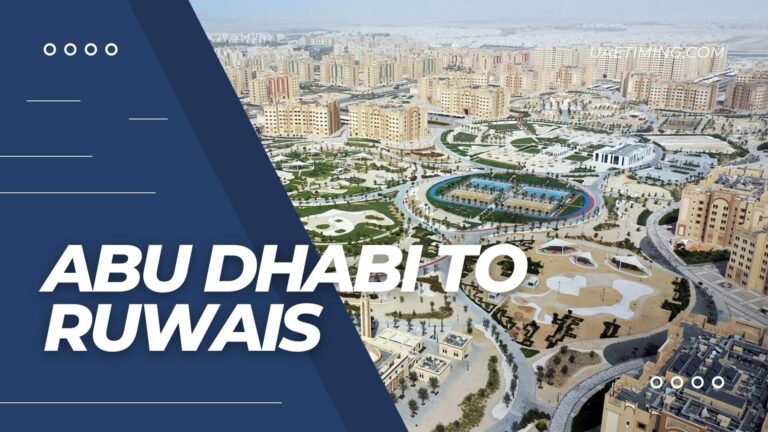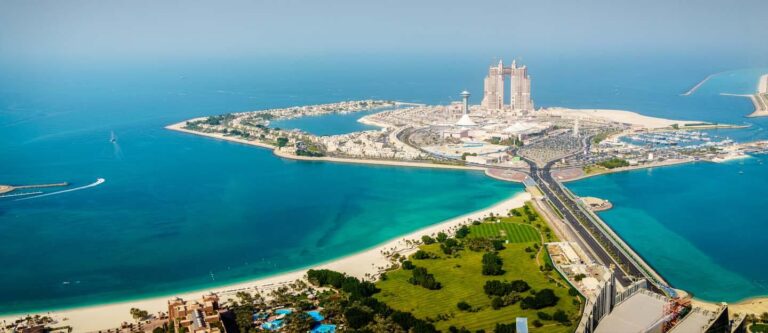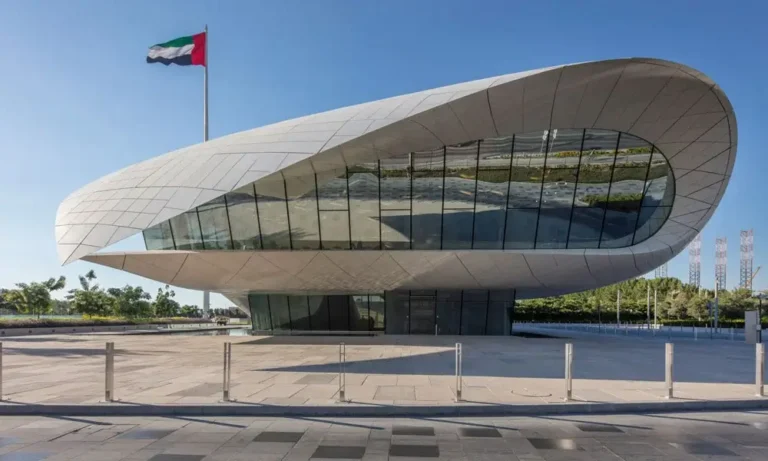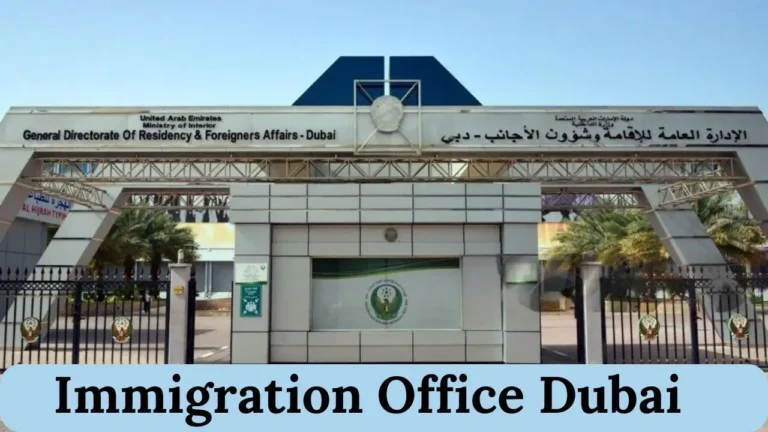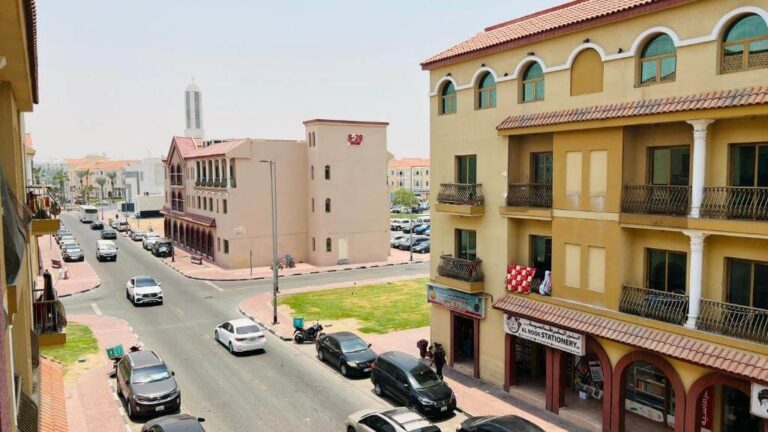Downtown Ras Al Khaimah, UAE: The Cultural and Economic Heartbeat of the Northern Emirates
Downtown Ras Al Khaimah is where the emirate’s rich heritage meets modern ambition — a city center that mirrors the UAE’s forward momentum while retaining its coastal charm. As Ras Al Khaimah emerges as one of the fastest-growing destinations in the country, its downtown district has become a focal point of investment, urban living, and cultural renewal.
The Soul of a Rising Emirate
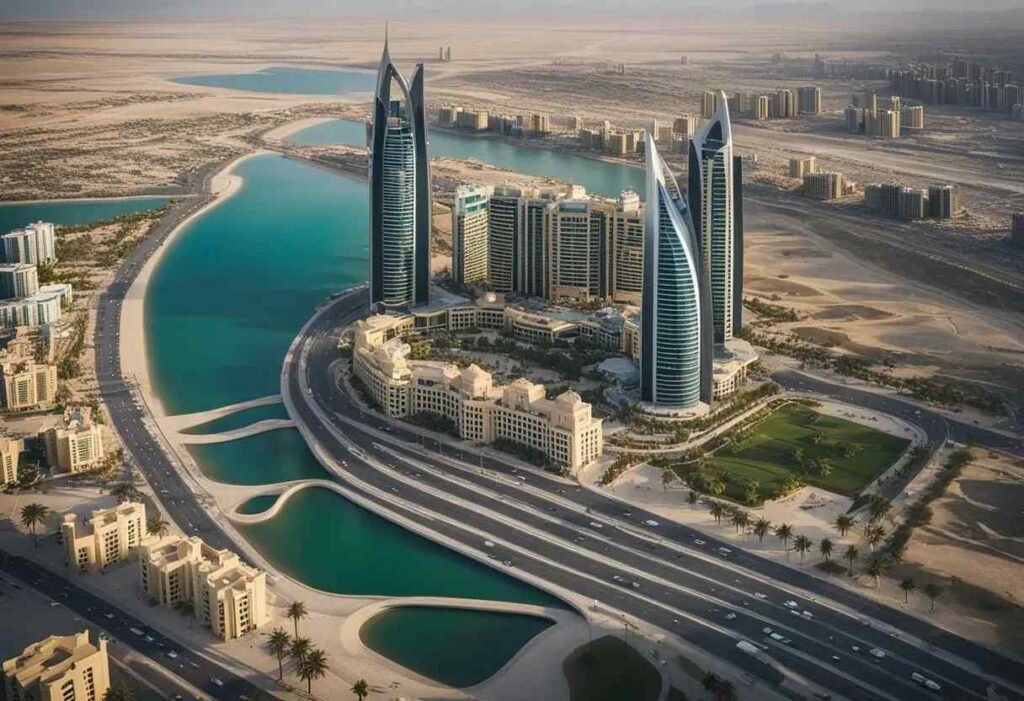
Ras Al Khaimah (RAK), meaning “Headland of the Tent,” has a history that stretches back over 7,000 years, making it one of the oldest continuously inhabited regions in the world. Once home to the ancient port of Julfar — a bustling trade hub during the Islamic era — the city’s legacy is intertwined with maritime commerce, exploration, and craftsmanship.
Downtown Ras Al Khaimah continues that legacy today as the emirate’s beating heart — an area where government offices, cultural landmarks, and modern developments converge. Here, heritage meets opportunity. The skyline tells a story of transformation: from traditional souks and mosques to gleaming towers like Julphar Towers and Al Nakheel’s modern residential blocks.
The Economic Pulse of RAK
Downtown Ras Al Khaimah has rapidly evolved into the emirate’s commercial and financial nucleus. Its property market reflects strong fundamentals — high occupancy, consistent rental demand, and a tax-free investment framework that appeals to both local and international buyers.
According to the Ras Al Khaimah Real Estate Regulatory Agency (RERA), property transactions in the emirate surged to AED 11.95 billion in 2024, a 70% rise since 2020. Much of this momentum stems from developments concentrated in the downtown corridor, particularly Al Nakheel and Al Seer, which are home to offices, retail spaces, and mid-to-high-end apartments.
Apartment yields in the area average between 5–7%, offering investors a stable income stream backed by Ras Al Khaimah’s strong tourism and population growth. With 1.22 million visitors recorded in 2023 and targets set to reach 3 million by 2030, Downtown RAK stands at the crossroads of real estate opportunity and urban expansion.
Seamless Connectivity: From RAK to the World
Strategically positioned, Downtown Ras Al Khaimah benefits from exceptional connectivity across the emirate and beyond. The district lies just 15 minutes from Ras Al Khaimah International Airport and approximately 45 minutes from Dubai International Airport, making it an accessible destination for commuters, tourists, and business professionals alike.
Upcoming infrastructure like the Etihad Railway, connecting Ras Al Khaimah with major UAE cities, will redefine regional accessibility, reducing travel time and enhancing logistics efficiency. Complementing this is the upgrade of Ras Al Khaimah International Airport, expanding its capacity to serve two million passengers annually — a development set to boost both tourism and property values in the downtown area.
The Lifestyle Hub of the North
Downtown RAK is more than a business zone — it’s a lifestyle ecosystem designed for balance, convenience, and culture. Residents enjoy proximity to the Al Qawasim Corniche, one of the emirate’s most scenic waterfront promenades lined with cafés, jogging paths, and family-friendly parks.
Nearby, RAK Mall and Manar Mall provide retail variety, while local souks in Al Nakheel preserve the city’s traditional shopping experience. Educational institutions such as RAK Academy and community facilities make the area ideal for families, while professionals appreciate easy access to corporate offices and co-working spaces.
Adventure lovers are never far from nature — the RAK Mangroves offer kayaking experiences just minutes away, and Jebel Jais, the UAE’s highest mountain, beckons thrill-seekers with zip-lining, hiking, and panoramic views.
Property Investment in Downtown RAK: A Smart Play
Investors are increasingly viewing Downtown Ras Al Khaimah as a lucrative alternative to Dubai’s overheated market. Apartments here start at around AED 350,000, compared to AED 1.2 million in central Dubai — making RAK an accessible entry point for new investors.
- Buy-to-Let Returns: Studios priced at AED 400,000 yield 6% annually in long-term rentals and up to 9% in short-term stays.
- Off-Plan Opportunities: Developments like One RAK Central by Pantheon Development offer 10–15% savings during construction and promising capital appreciation.
- Commercial Real Estate: Office spaces deliver 6–8% yields, benefiting from the influx of companies setting up under the Ras Al Khaimah Economic Zone (RAKEZ).
RAK’s tax-free framework — with no capital gains or income tax — ensures investors keep 100% of their earnings, while 100% foreign ownership provides full control over assets.
Regeneration and Urban Renewal
The government’s ongoing regeneration strategy is transforming RAK Downtown into a model for sustainable urban living. Projects such as One RAK Central, Ellington Views I & II, and digital Smart City initiatives are redefining the district’s future.
Enhancements to Al Qawasim Corniche, new public plazas, and green infrastructure aim to create a livelier pedestrian environment, while RAKEZ’s growth (13,000+ new companies in 2024) strengthens the economic backbone supporting the downtown’s expansion.
Upcoming attractions like the Wynn Al Marjan Island Resort, a $3.9 billion luxury destination just 15 minutes away, are set to boost short-term rentals and retail activity across RAK Downtown — making now a prime moment for investors to position themselves.
Culture, Heritage, and the Human Connection
Despite its modernity, Downtown RAK maintains a deep connection to Ras Al Khaimah’s heritage. The National Museum of Ras Al Khaimah, housed in an 18th-century fort, showcases artifacts that trace the emirate’s seafaring and trading roots.
Cultural landmarks like Al Jazirah Al Hamra, a preserved ghost town, and community events such as the Ras Al Khaimah Fine Arts Festival blend tradition with innovation, keeping the city’s soul alive amid rapid growth.
Challenges and Considerations
While the downtown market remains robust, potential investors should remain mindful of project timelines, global market trends, and infrastructure dependency. RERA’s escrow account regulations mitigate developer risks, but investors are advised to conduct due diligence before purchasing off-plan units. Additionally, limited public transport means residents rely heavily on personal vehicles, a factor that future smart mobility projects aim to address.
The Future of Downtown Ras Al Khaimah
All signs point to a dynamic future. With apartment prices expected to rise another 5–7% in 2025, infrastructure upgrades underway, and tourism projections climbing, Downtown RAK is set to become a central player in the UAE’s northern development strategy.
For investors, it represents more than just property ownership — it’s participation in a vision where cultural heritage and economic ambition move in harmony. For residents, it’s a place to live, work, and thrive in an environment that feels both grounded and progressive.
FAQs about Downtown Ras Al Khaimah
1. What makes Downtown Ras Al Khaimah unique compared to other UAE cities?
Downtown RAK offers the perfect mix of affordability, urban connectivity, and cultural authenticity — making it a rare balance between modern city life and Emirati tradition.
2. Is investing in Downtown Ras Al Khaimah profitable?
Yes. With property yields of 5–7% and growing tourism-driven demand, RAK Downtown provides stable, tax-free returns, supported by government-backed economic diversification.
3. How far is Ras Al Khaimah from Dubai?
It’s approximately a 1-hour drive (around 100 km) from Dubai, accessible via Emirates Road (E611) or Sheikh Mohammed Bin Zayed Road (E311).
4. What are the key attractions near Downtown Ras Al Khaimah?
Nearby attractions include Al Qawasim Corniche, National Museum of RAK, RAK Mall, RAK Mangroves, and the Jebel Jais Mountain adventure zone.
5. Can foreigners buy property in Downtown RAK?
Absolutely. Foreigners can own 100% of freehold properties in Ras Al Khaimah, and investors who purchase properties worth AED 2 million or more may qualify for long-term residency visas.
- Al Wahda Mall Abu Dhabi, UAE: The Ultimate Shopper’s Paradise - November 27, 2025
- Shab-e-Barat 2026 UAE: Date, Meaning, Global Differences & Complete Guide for the UAE - November 26, 2025
- Where Else Can You Use Your Nol Card in Dubai? - November 26, 2025

